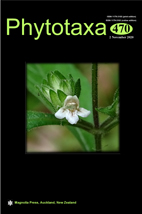Abstract
The diatom genus Planothidium from streams and rivers in California was studied by applying the most current species designations. Twenty Planothidium taxa were identified in total, including a previously undescribed species, Planothidium californicum. Extensive light and scanning electron microscopic documentation is provided to support consistent further identification of the taxa for the local stream bioassessment. The most common and abundant species, recorded across the entire state, were P. frequentissimum, P. lanceolatum, P. victorii, P. cryptolanceolatum, P. amphibium, and P. minutissimum. Species ranges and species-weighted averages for the main anthropogenic stressors, i.e. chloride, conductivity, dissolved organic carbon, total nitrogen and total phosphorus were determined for the eleven most common Planothdium taxa. Statistically significant differences among species weighted averages were determined by randomization test. Of these eleven species, P. delicatulum, P. robustum, P. engelbrechtii, P. frequentissimum and P. victorii had the highest weighted averages along the chloride and conductivity gradients. P. potapovae, Planothidium sp. 1, P. amphibium, and P. engelbrechtii had narrow nutrient ranges and lowest weighted averages for total nitrogen and phosphorus, making them significantly different from P. delicatulum which had highest total nitrogen average and from P. minutissimum, associated with highest total phosphorus average level. Given that there were differences in associations with environmental variables between recently described species, it is important to use the new taxonomy when using diatoms in bioassessment work.

